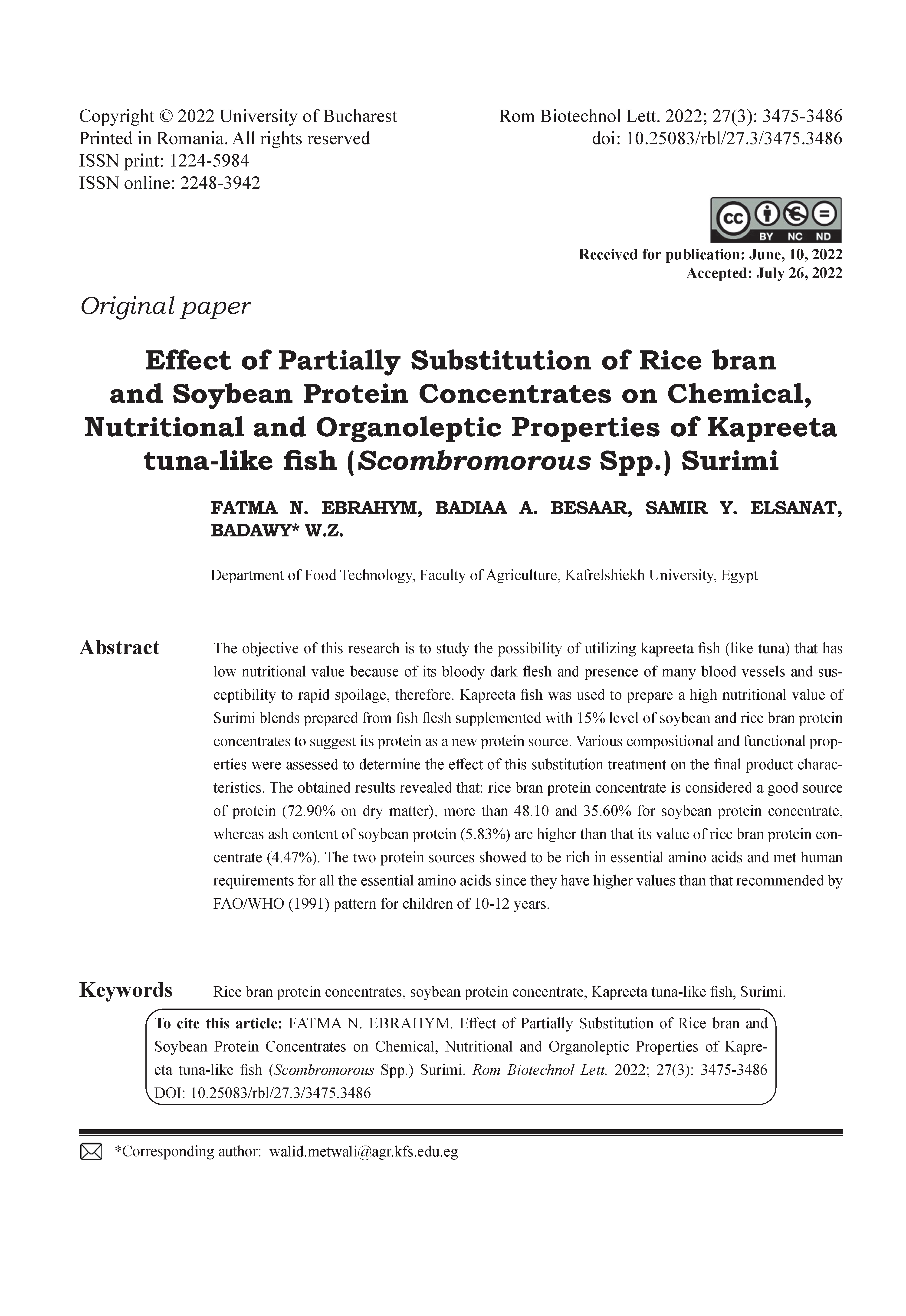Effect of Partially Substitution of Rice bran and Soybean Protein Concentrates on Chemical, Nutritional and Organoleptic Properties of Kapreeta tuna-like fish (Scombromorous Spp.) Surimi
DOI:
https://doi.org/10.25083/rbl/27.3/3475.3486Keywords:
Rice bran protein concentrates, soybean protein concentrate, Kapreeta tuna-like fish, SurimiAbstract
The objective of this research is to study the possibility of utilizing kapreeta fish (like tuna) that has
low nutritional value because of its bloody dark flesh and presence of many blood vessels and susceptibility to rapid spoilage, therefore. Kapreeta fish was used to prepare a high nutritional value of Surimi blends prepared from fish flesh supplemented with 15% level of soybean and rice bran protein concentrates to suggest its protein as a new protein source. Various compositional and functional properties were assessed to determine the effect of this substitution treatment on the final product characteristics. The obtained results revealed that: rice bran protein concentrate is considered a good source of protein (72.90% on dry matter), more than 48.10 and 35.60% for soybean protein concentrate, whereas ash content of soybean protein (5.83%) are higher than that its value of rice bran protein concentrate (4.47%). The two protein sources showed to be rich in essential amino acids and met human requirements for all the essential amino acids since they have higher values than that recommended by FAO/WHO (1991) pattern for children of 10-12 years.





